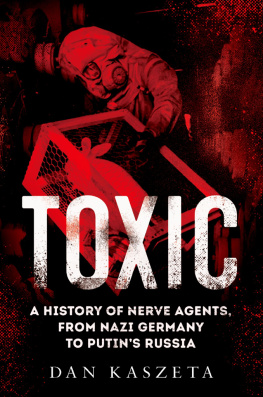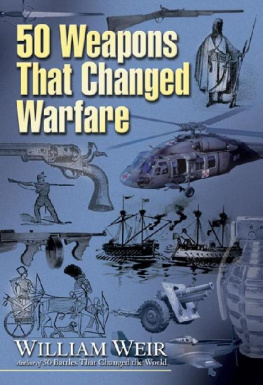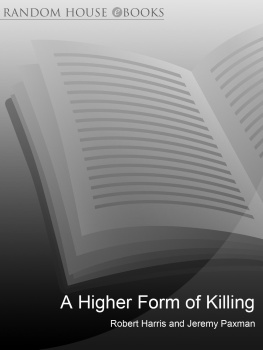Cover design by Lauren Harms; photograph of gas defense drill by Lt. E. M. Derri, Sig.R.C./War Department, Army War College, Historical Section, World War I Branch, ca. 19181948
Cover copyright 2017 by Hachette Book Group, Inc.
Hachette Book Group supports the right to free expression and the value of copyright. The purpose of copyright is to encourage writers and artists to produce the creative works that enrich our culture.
The scanning, uploading, and distribution of this book without permission is a theft of the authors intellectual property. If you would like permission to use material from the book (other than for review purposes), please contact permissions@hbgusa.com. Thank you for your support of the authors rights.
Little, Brown and Company is a division of Hachette Book Group, Inc. The Little, Brown name and logo are trademarks of Hachette Book Group, Inc.
The Hachette Speakers Bureau provides a wide range of authors for speaking events. To find out more, go to www.hachettespeakersbureau.com or call (866) 376-6591.
The publisher is not responsible for websites (or their content) that are not owned by the publisher.
Research Division, Bureau of Mines/Chemical Warfare Service
George A. Burrell Chief of the Research Division. Within days of President Wilsons war declaration, Manning asked Burrell to direct chemical warfare research for the Bureau of Mines. With the consolidation of the Chemical Warfare Service in 1918, he retained his position as chief of research.
James Bryant Conant A brilliant Harvard chemist who came to Washington in 1917. Recruited to work in the Research Division, his work on mustard hastened the mass production of the chemical warfare agent. When lewisite became a focus of offensive war research, Conant was sent to Willoughby, Ohio, to set up the secret lewisite plant there called the Mousetrap. Became president of Harvard in 1933 and later played a critical role in the Manhattan Project.
Bradley Dewey A chemist from Burlington, Vermont, who worked on gas mask development with Warren K. Lewis. In charge of the Gas Defense Plant in Long Island City, New York.
Frank M. Dorsey Chief of the Chemical Warfare Services Development Division. A chemical engineer in the Lamp Development Laboratory at General Electrics Nela Park campus outside Cleveland, Dorsey was instrumental in developing charcoal for gas masks. He later played crucial roles in mustard production and construction of the Mousetrap.
Arno C. Fieldner An Ohio State University graduate who worked on gas masks.
Yandell Henderson An irascible Yale physiologist accused of being an apologist for the Central powers before the war. His work on physiology and pathology paved the way for human-subject research, in which soldiers were used in testing equipment and as test subjects for the effects of chemical weapons.
George A. Hulett A Princeton chemist and longtime consultant to the Bureau of Mines, enlisted to travel to France in April 1917 to investigate war gas research for the bureau. His observations and recommendations were pivotal to the organization of the Chemical Warfare Service in France.
Warren K. Lewis MIT chemist who worked on gas mask research.
Winford Lee Lewis An Illinois chemist who came to work for the Bureau of Mines in January of 1918. His Organic Research Unit No. 3 at Catholic University uncovered previous experiments that led to the development of the chemical warfare agent lewisite.
Vannoy Hartog Manning Director of the Bureau of Mines in Washington, D.C. One of a few U.S. government officials who saw the impending need to prepare for chemical warfare. The Research Division began under his oversight and provided the nucleus for the Chemical Warfare Service.
Eli K. Marshall A Johns Hopkins physician whose work also centered on the physiological and toxicological effects of chemical weapons.
James F. Norris An MIT professor known as Sunny Jim with a famously ferocious intellect. Initially put in charge of both offensive and defensive chemical research problems, he later became chief of only offensive gas research. His chance encounter on the street with James Bryant Conant brought the young chemist into the orbit of the growing Research Division.
E. Emmet Reid A chemist and early recruit of the Bureau of Mines who came from Johns Hopkins to find new chemical warfare agents.
George S. Rice Van Mannings chief mining engineer for the Bureau of Mines. One of the earliest members of the committee that spearheaded the bureaus research efforts.
William H. Walker An MIT chemist considered a pioneer of chemical engineering and industrial chemistry. Became the chief of Edgewood Arsenal before relinquishing control of the arsenal to Amos Fries in June of 1919.
Department of Justice/Bureau of Investigation
A. Bruce Bielaski Chief of the Bureau of Investigation, the predecessor of the FBI. After the war, he went to work for Richmond Levering.
Charles DeWoody The Bureau of Investigations division superintendent in New York City who succeeded Offley.
Warren W. Grimes Bureau of Investigation agent assigned to Jones Point, New York. Dismissed shortly after Scheeles arrival in Jones Point in April. Code name Warren White.
Richmond M. Levering An oilman from Indiana who worked for the Department of Justice under the auspices of the American Protective League. He retrieved Walter Scheele from Cuba in March 1918 and put the German spy to work in his factory in Jones Point, New York.
Francis X. ODonnell Bureau of Investigation agent assigned to Jones Point, New York. Code name ODell.
William Offley The Bureau of Investigation division superintendent in New York City.
Graham Rice Bureau of Investigation agent assigned to Jones Point, New York. Code name Riser.
Walter T. Scheele A German chemist sent to the United States to conduct industrial espionage. Activated to manufacture chemicals for Germany, he was then ordered to create chemical bombs to ignite cargo on Europe-bound ships. Indicted in 1916, he fled to Cuba and was captured in March 1918. Facing possible execution for his role in the ship-bomb plot, he agreed to work for the U.S. government and conducted research at a secret lab in Jones Point, New York, for the duration of the war. Had the code name Nux and gained the alias Dr. Smith while at Jones Point.
Bruce R. Silver A chemist for the inventor Thomas A. Edison. Silver evaluated Scheeles expertise after his capture and worked alongside Scheele at Jones Point until shortly after the war. His tenure ended in spring of 1919, when funding for his work at Edisons lab dried up.
U.S. Army
James T. Addison Chaplain for the First Gas Regiment. Arrived at Fort Myer in January 1918, went to France in February 1918 with Companies C and D.
Earl J. Atkisson Commander of the Thirtieth Engineers (Gas and Flame), renamed the First Gas Regiment.








